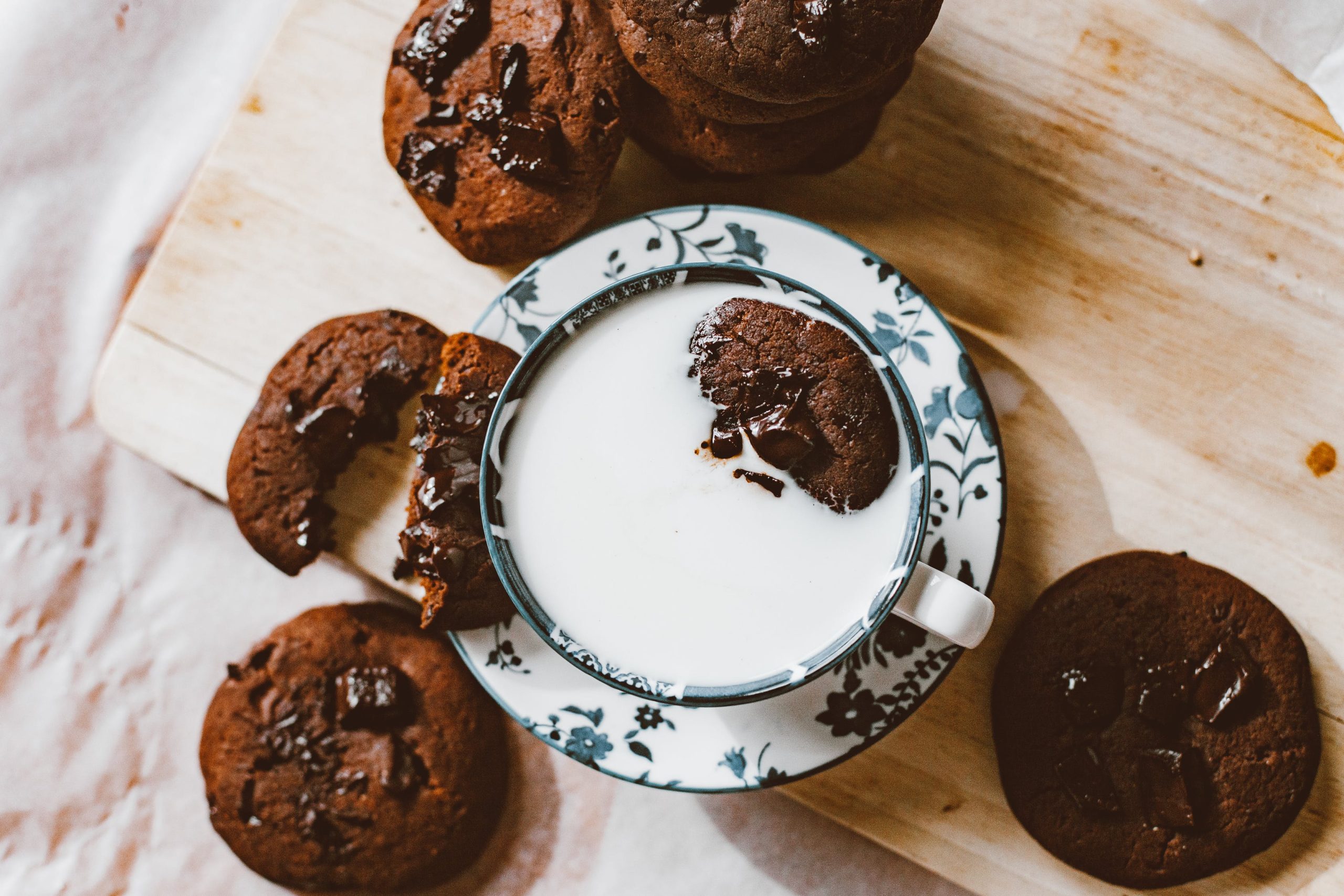Photo by ROMAN ODINTSOV from Pexels
Lactose intolerance is a common but frustrating issue that prevents people around the world from being able to enjoy foods with any milk or dairy products without experiencing stomach aches and abdominal discomfort.
But the good news is that you don’t have to give up sweet, decadent chocolate, even if you are lactose intolerant! Here’s how to enjoy chocolate even if you are lactose intolerant.
What Causes Lactose Intolerance?
First, let’s get a little technical: what exactly does it mean to be lactose intolerant, anyway?
People who are lactose intolerant cannot properly digest milk and other dairy products because they don’t make enough of the enzyme lactase.
Your body relies on digestive enzymes to help break down nutrients from your food and digest them. One of these enzymes is lactase, which helps break down lactose, the type of sugar that is found in milk and milk products.
Someone who is lactose intolerant does not produce enough lactase in your small intestine to properly digest milk, which can lead to a variety of uncomfortable symptoms upon consumption like:
- Bloating
- Gas
- Diarrhea
- Cramps
- Nausea
Lactose intolerance is not to be confused with a dairy allergy, where people have an allergic reaction to milk and can experience severe symptoms like rashes, hives, and even anaphylaxis on top of abdominal issues.
So lactose intolerance usually isn’t a severe or life-threatening condition, but its symptoms are often unpleasant enough that people who suffer from it choose to avoid dairy when possible.
Chocolate And Lactose Intolerance
So what does lactose intolerance have to do with chocolate?
Unfortunately, milk and chocolate have historically gone hand-in-hand, which can present a problem for anyone who can’t consume milk or milk products.
On its own, chocolate itself is lactose intolerant-friendly since it doesn’t inherently contain milk. It is made from the fermented, roasted, and processed beans of the cacao tree. Those beans are then ground down into a cocoa powder, which is then used to make the sweet chocolate products we’re familiar with.
But pure cocoa powder and chocolate are actually fairly bitter, which means that other ingredients are often added to chocolate during production to mellow out the taste and bring it closer to that sweet, decadent treat that we’re familiar with. Milk is one of the most common ingredients that is added to chocolate since it can add some creaminess and help neutralize the bitterness of the pure chocolate powder. You probably know this product as “milk chocolate,” one of the more popular types of chocolate used in candies, sweets, and baking. As the name suggests, this can sometimes cause issues for people with lactose intolerance.
But on the bright side, there are plenty of chocolate options for people who are lactose intolerant!
What To Look For In A Chocolate If You’re Lactose Intolerant
If you suffer from lactose intolerance and want to find a chocolate bar that won’t upset your stomach, the easiest option is to look for candies that state that they’re lactose-free right on the label. Chocolate products that are specifically marketed to people avoiding milk and dairy will often declare themselves to be “dairy-free” or “plant-based” or “vegan” on the packaging. All of these labels indicate that there is no milk used during production!
In the absence of any “dairy-free” claims, you can also simply read the nutrition label and ingredients list to determine whether or not any milk was used in the processing. Milk may also appear under other terms on the nutrition label including:
- Whey
- Cream
- Lactose
- Cream
- Dairy product solids
- Half-and-half
- Rennet
Some chocolate fillings like caramels or nougat might also use milk. Familiarize yourself with the different terms that indicate milk so that you don’t have to suffer any surprise upset stomachs later!
Lactose intolerant chocolate lovers can also stick with dark chocolate — and as a general rule, the darker, the better! The difference between dark chocolate and milk chocolate all comes down to the amount of dairy and other ingredients added. When dark chocolates have a percentage listed on the label, it tells you how much actual cocoa is present versus milk, sugar, and other ingredients. So the higher the percentage, the more actual chocolate is in the bar.
If you prefer the sweeter taste of milk chocolate over dark chocolate, you can always look for chocolate brands that use alternative plant-based milk instead. Some chocolate brands will use dairy-free alternatives like coconut milk and almond milk to make products with the same sweet taste of milk chocolate, minus the dairy that could activate an abdominal reaction.
However, it’s important to note that relying on dark chocolate and “dairy-free” labels on their own might not be enough of a guarantee that there is no milk present. The FDA did a survey of dark chocolate products that were labeled as “dairy-free” and found that 4 out of the 52 products did contain high levels of milk that could be potentially hazardous for people suffering from dairy allergies. This is likely due to cross-contamination since those chocolate products were made on equipment that was also used to make milk chocolate. The trace amounts of milk might not always trigger a reaction if you’re lactose intolerant, but it’s still a possibility.
Ultimately, the best ways to know whether or not the chocolate you’re eyeing is dairy-free are to read the nutrition labels and research your chocolate brands of choice.
Other Options For Lactose Intolerant Chocolate Lovers
- Take a supplement to help your body digest lactose. People who suffer from lactose intolerance can sometimes enjoy dairy products simply by popping a lactase pill. These pills contain the lactase enzyme that helps break down lactose and can be taken along with the consumption of milk chocolate or other dairy products to prevent or minimize any gastrointestinal distress.
- Increase your probiotic intake. In addition to the digestive enzymes that your body makes, you also have trillions of bacteria in your gut that help you digest the foods that you eat! Because they are so important for your digestion, some research has shown that eating probiotics, a type of healthy bacteria found in food items like yogurt and some supplements, could potentially help alleviate some symptoms of lactose intolerance.
Conclusion
Being lactose intolerant does not automatically mean that you have to cut out your chocolate consumption. Stick with dark chocolate and dairy-free brands to ensure that your favorite treat doesn’t leave you suffering from an upset stomach later.

